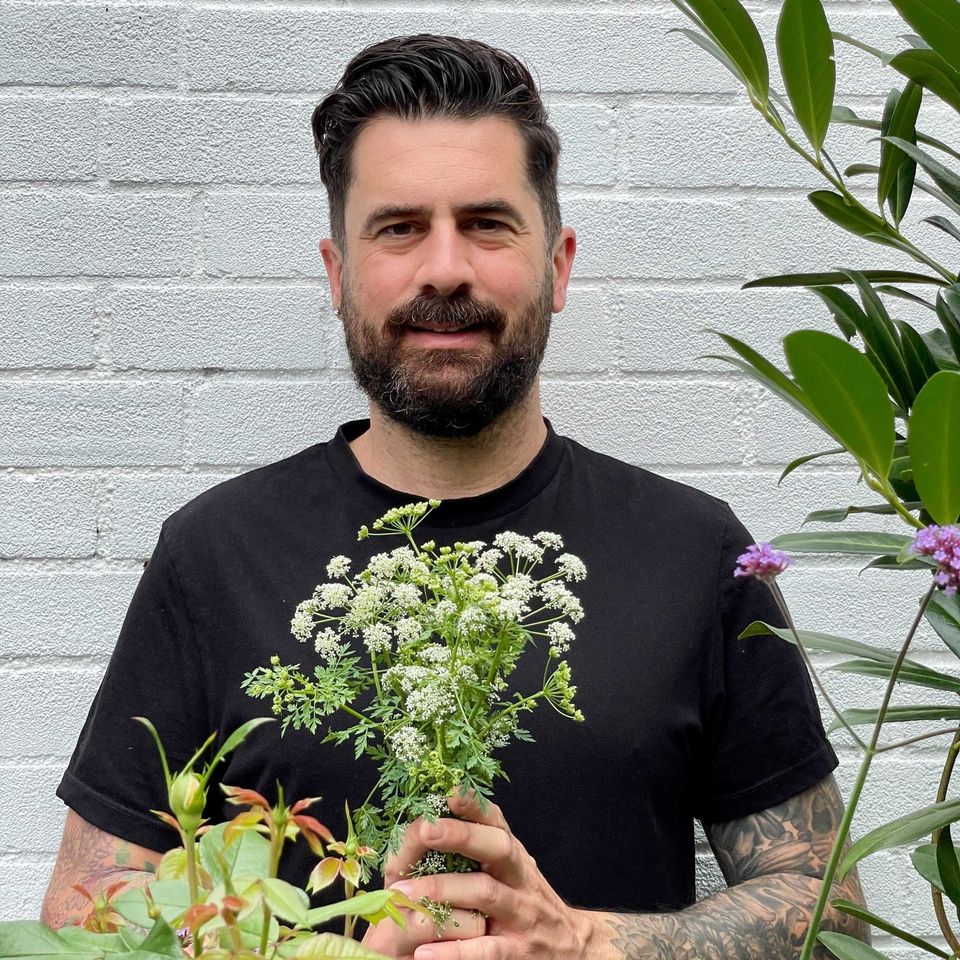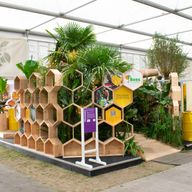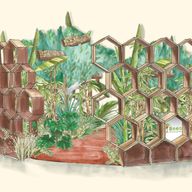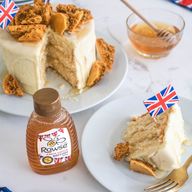
Growing nectar-rich blooms like pretty peonies and sensational sunflowers in your garden or outdoor space is a wonderful thing to do for our pollinating pals.
However, have you ever stopped to think that you might be pulling up many of the plants they love? That’s right, weeds are good for bees, too!
For many years, gardening seemed to be the practice of “taming a garden”. But, over the years, we’ve realised that a few frayed edges aren’t necessarily a bad thing. Allowing some weeds to appear, whether that’s amongst your borders, or in a more controlled space, is a brilliant way to provide additional nectar sources for bees.
After all, what really is a weed? In most of our minds, it’s just a plant in the wrong place. But, if you change the way we think about them, then why can’t we embrace lovely pink thistles in our mixed borders? Let your lawn grow a little longer, and let some dandelions appear here and there!
I must admit I’ve been quite brave with my front garden this season – I haven’t laid a finger on it since I planted it up in May. There are now little patches of cow parsley, a few nettles, and a splash of pineapple mayweed too. My neighbours might be shocked, but I love the synergy between the weeds and the “chosen plants”. Do you dare to try it yourself?
Below are my top pollinator-friendly weeds from every season that can help to feed the bees. I hope these encourage you to let things grow a bit ‘wild’ and create an oasis of tasty nectar for pollinators – something I’m very passionate about and one of the reasons I love working with Rowse on its Hives for Lives programme of vital initiatives to help protect bees and beekeepers around the world.
Spring
Dandelions (Taraxacum officinale)
The biggest leap of faith for you as a gardener will be to let your dandelions grow! When you look up close, they’re actually really beautiful. Dandelions flower from May all the way through to October. They’re an excellent source of nectar for many types of bees. Try embracing them, or even re-plant them in a specific area, where you can make them a spectacle. As a bonus, you can use the leaves in salads!
White Clover (Trifolium repens)
This particular clover is much loved by honey bees, as it has a shorter flower tube than red clover, so is much more accessible. It also flowers at the end of spring, a time when other food sources for pollinators could be scarce. That’s a good reason to have a wildflower lawn, if ever I heard one!
Foxglove (Digitalis purpurea)
It might seem like a cultivated plant, but foxgloves actually grow really easily in the wild in the UK, and very often pop up as weeds. If you are one of the lucky ones, my advice is to let them grow, as the bees enjoy “furtling” around in the big wide nectar rich trumpets!

Summer
Ground Ivy (Glechoma hederacea)
A very low growing plant, and one that you’re probably used to removing from between paving slabs, or in gravelled areas. But my advice would be to leave it; not only does it have a pretty leaf, but the tiny purple flowers are loved by the bees. Did you know that there’s actually a variegated form that is commonly used in hanging baskets? If it’s good enough for the basket, it’s good enough for the border.
Honeysuckle (Lonicera periclymenum)
A common sight in hedgerows, the honeysuckle is a gorgeous wild plant, but for some it might seem like a weed. However, give it some support to climb, and you’ll soon have a blanket of beautiful two-tone blooms, which will buzz with bees throughout the summer months.
Corn Poppy (Papaver rhoeas)
Poppies are incredibly promiscuous and will pop up in the most random of places. I’ve got lots around my garden, all different types, and none of which I’ve planted! Why not grow traditional red poppies, which add an excellent pop of colour for your garden too. You could even try a few in pots.
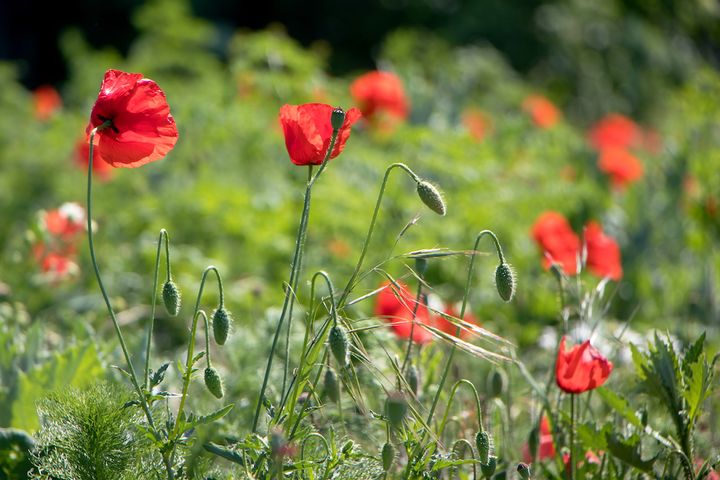
Autumn
Comfrey (Symphytum officinale)
Comfrey often pops up in shady corners of your garden. It’s easy to mistake it for a foxglove when they first come through the soil, and is not only loved by bees, but you can also use the leaves to make a natural fertiliser!
Ivy (Hedera helix)
Ivy is incredibly underrated. Yes, it can be quick-growing and difficult to control, but when you’ve got it in the right place, it is an excellent nectar source for the bees. The autumn flowering period helps bees to collect nectar sources as they approach winter, and once the flowers fade, the berries can be enjoyed by the birds too!
Knapweed (Centaurea scabiosa)
As things cool down in the autumn, it’s important to make sure there are still plenty of nectar sources for the bees. So, late summer blooms such as knapweed – with its bright pink-purple flowers, could stick around to provide the nourishment that our pollinating pals need.
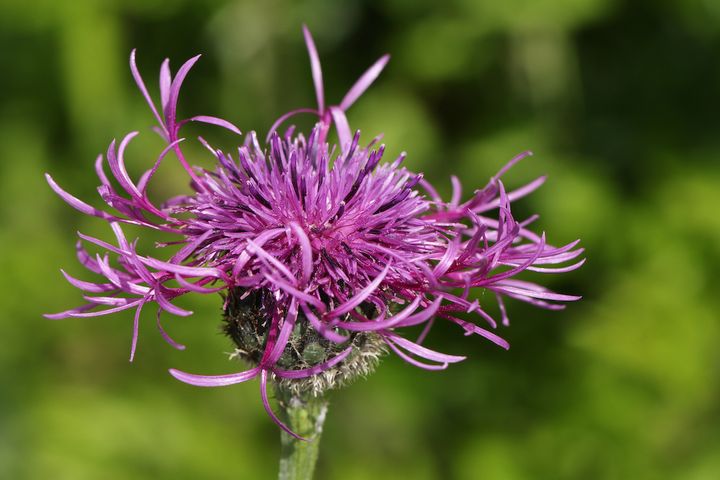
Winter
Stinking Hellebore (Helleborus foetidus)
A slightly more unusual weed in the garden, but if stinking hellebore does pop up, I suggest that you give it chance to grow. This wild hellebore will give a nectar source for bees that still roam during the cold months, and is a really intriguing plant for a shady border.
Chickweed (Stellaria media)
It may come as some surprise to you, but this alleged weed is actually rather useful in the garden. Not only is it edible, and rather tasty, but it also acts as a low season nectar source for bees. It’s about time you let a little patch grow, I dare you!
Deadnettle (Lamium purpureum)
The winter months are especially important, as some bees will still be looking for nectar sources. Deadnettle flowers through the cooler months and looks really brilliant. Leave them in the border, or even put a few up into patio containers to add some wonderful winter colour.

Allowing nature to shape our gardens can actually bring more nature in, whether that’s bees, butterflies, or a host of other wildlife. And the best thing of all, you don’t even have to go out and buy any plants!
